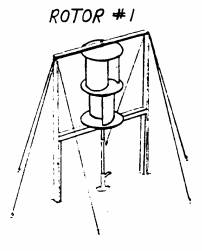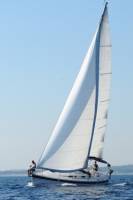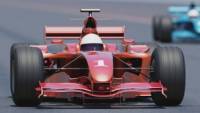|
Wind Power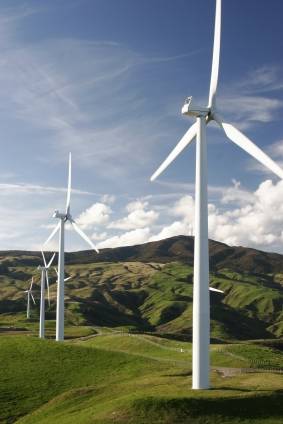
Wind power is an alternative source of energy that’s getting a lot of attention these days. Like other areas in the energy field, it’s not something new but rather a resurgence of interest in an old source of energy. Wind was one of the earliest forms of energy harnessed to do work. We only have to look at the effects of hurricanes to see evidence of wind energy. Trees bending the breeze also demonstrate the power of the wind in a less dramatic way.. The energy in wind is obvious. The question is how to harness it. The first use of wind power was in the sail of a vessel. It’s not too hard to imagine people inspired by the sight of wind moving a boat across water trying to capture that same power for use on land. Windmills were the result. If you’re interested, I talk about the history of windmills and wind power on another page. Types of windmillsWind mills are generally categorized as either vertical axis or horizontal axis. In a vertical shaft windmill, the shaft rotated by the wind runs perpendicular to the ground. The earliest windmills were of this style. There have been many innovative designs since, but generally vertical axis windmills are less efficient than horizontal windmills. Most people have seen an aerodyne, a device for measuring wind speed. This is actually a small vertical axis windmill and illustrates how they work fairly nicely. Imagine cutting a hollow ball in half and mounting each half on the end of a stick with the concave sides pointing in opposite directions. The stick is parallel to the ground and pivots around a vertical shaft in the middle.
The convex side on the other hand, has much lower resistance. It’s more aerodynamic and moves through the air more easily. As the diagram shows, if this device is place in the wind, the force on each end of the stick will not be the same because one end has the concave side facing the wind and the other end has the convex side facing the wind. Because of the greater pressure against the concave side, the shaft will rotate around the central vertical axis. Wind mills like this are still used to day. A larger scale version still used in some areas to pump water is made from 50 gallon drums cut in half lengthwise. This sketch shows a design for such a homemade windmill. Oil drums are cut to make the paddles of the windmill.
A major problem with vertical windmills is that they will never be as efficient as horizontal shaft windmills because although the resistance on the convex side is less than on the concave side, it is not zero. This resistance partially counteracts the effect of the wind on the concave side. It’s as if half the windmill is trying to turn the shaft and the other half is trying to slow it down. That doesn’t happen on a horizontal shaft windmill. Horizontal Shaft Windmills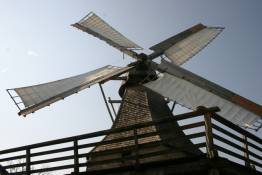
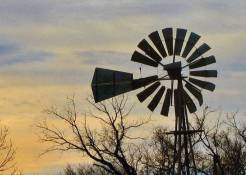
When most people hear the word “windmill”, they often picture Dutch windmills by the sea, or a smaller windmill on the top of a tower on a ranch. Both are examples of horizontal shaft windmills. On these windmills, each blade pushes the shaft in the same direction all the time. This increases efficiency very significantly. It is a dominant reason why horizontal shaft windmills are favored today. One point to note is that the blades of horizontal shaft windmills aren’t merely paddles that the wind pushes against, like water pushing against the blades of a water wheel. Rather, the blades of most windmills operate more like an airfoil, using the principle of lift which greatly improves their effectiveness. At it basis, lift is generated when air moves over two sides of a surface at different speeds. On an airplane, the wing is designed to force air to move more quickly over the upper surface than the lower surface than the lower creating the lift that hold the airplane in the sky.
On sailboats, if they aren’t sailing directly downwind, it’s lift across the sail that creates forward movement. This is why it’s possible for sailboats to move faster than the speed of the wind.
On a formula 1 car, the airfoil over the rear wheels is designed so air moves faster over the lower surface, creating a downward force on the wheels t help hold them on the ground at high speed. And on windmills, it the phenomenon of lift that propels the blades. The physics of lift can get pretty complicated but here’s a simple example you’ve probably experienced. Have you ever held your hand out the window while riding in a car?. If you have, you noticed that if you held your hand at a slight angle one way or the other, the wind would push your hand up or down. That push is lift. You’d also notice that whichever way you move your hand, the wind pushes it toward the back of the car. That force is drag. Both or these forces act on the arms of a windmill. Lift moves the blades forward while drag slows it. The design of an effective windmill blade can also become pretty complicated. For example, the angle best angle for the blade to face the wind (the equivalent of the angle you hold your hand at when you have it out the car window) varies with how fast the blade is moving. Since the blade speed steadily increases as you go further out from the hub (a point half way to the tip travels a shorter distance in one revolution than a point on the tip), the best angle of attack is different at every point along the blade. Therefore, the blade should have a twist along its length. Many other such factors go into designing the blades of a windmill. An interesting fact is that many of the elements of efficient blade design were discovered during the middle ages by trial and error. The folks then didn’t have computer modeling and fluid dynamics wasn’t worked out until Newton and Berulli came along, yet they still were able to improve design by careful observation. In the past, windmills changed wind power directly into a mechanical task, such as pumping water or grinding grain. Today, most windmills are used to generate electricity. Such wind mills are more properly called wind turbines. Click here to find out more about harnessing wind power in the form of electricity on the Wind Turbines page. And you can find out more about smaller wind turbines suitable for use on an individual property on the Home Wind Power page. LinksClick here to return to Alternative Energy Primer from Wind Power |
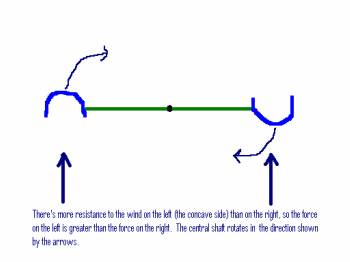 The concave side of the cup has high resistance. It tends to trap air very well in the same way that a parachutes moves with enough resistance to let someone jump safely out of a plane.
The concave side of the cup has high resistance. It tends to trap air very well in the same way that a parachutes moves with enough resistance to let someone jump safely out of a plane.